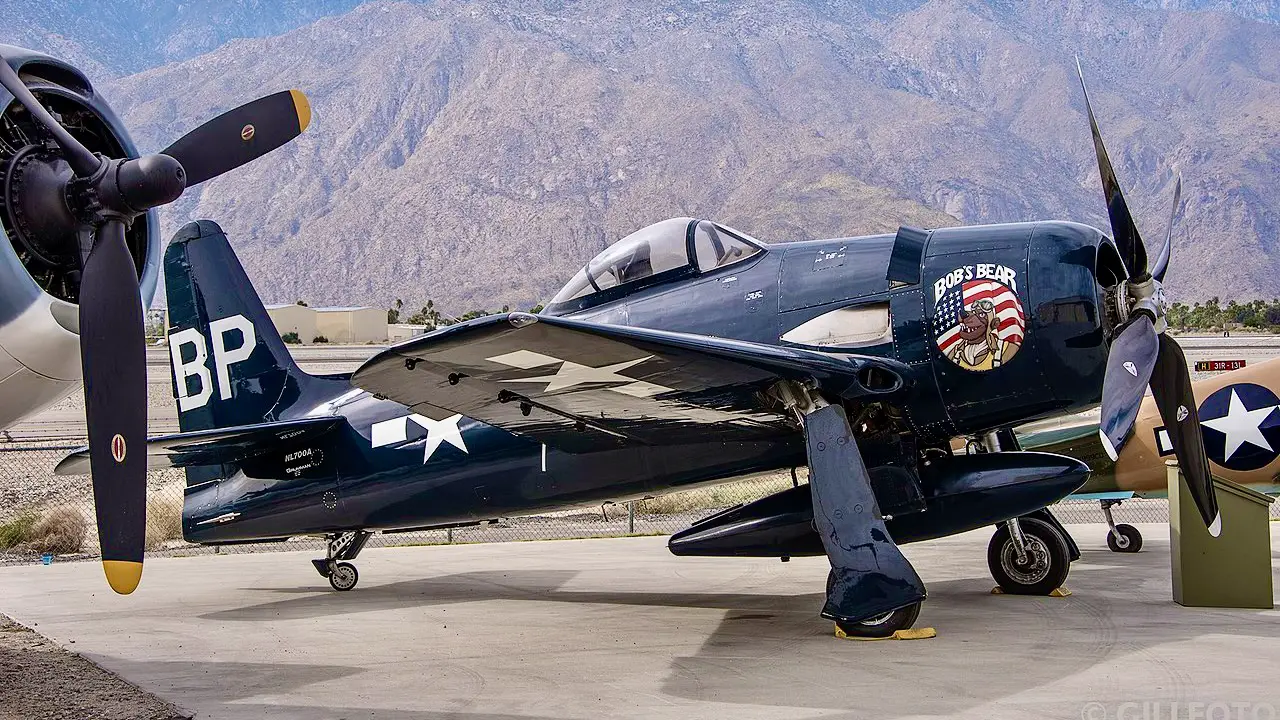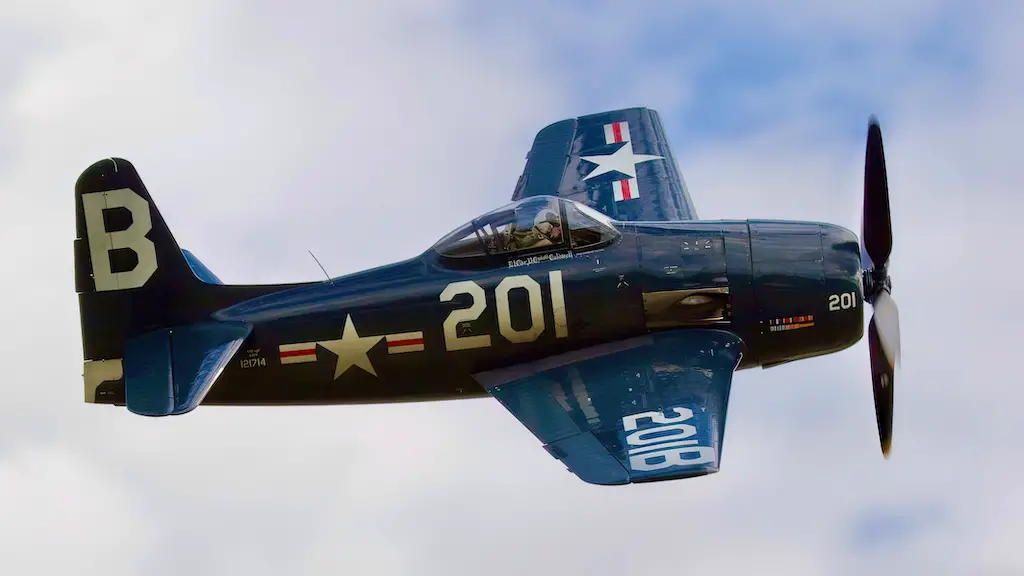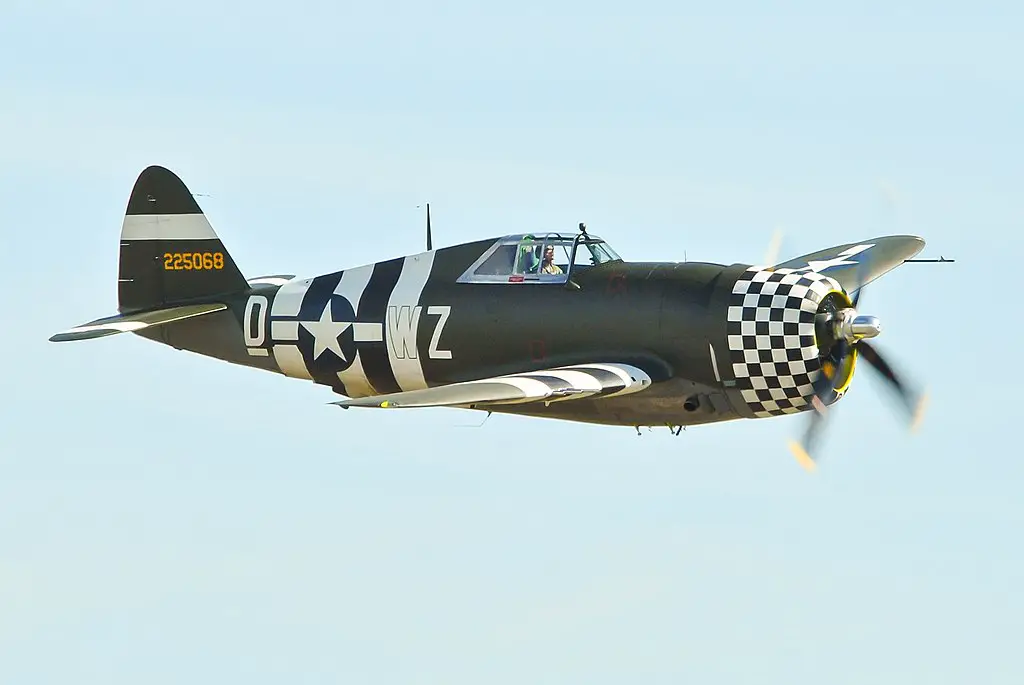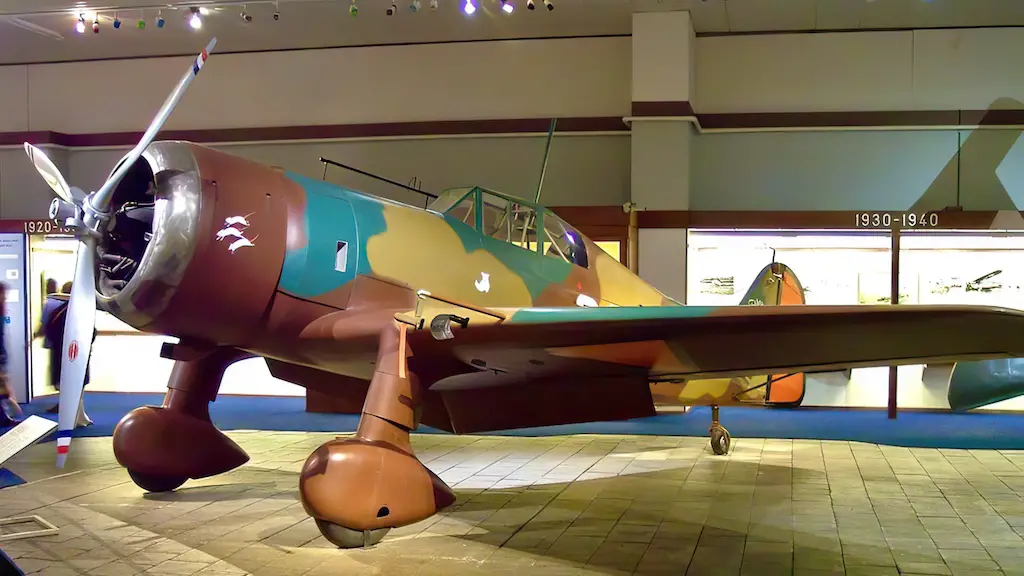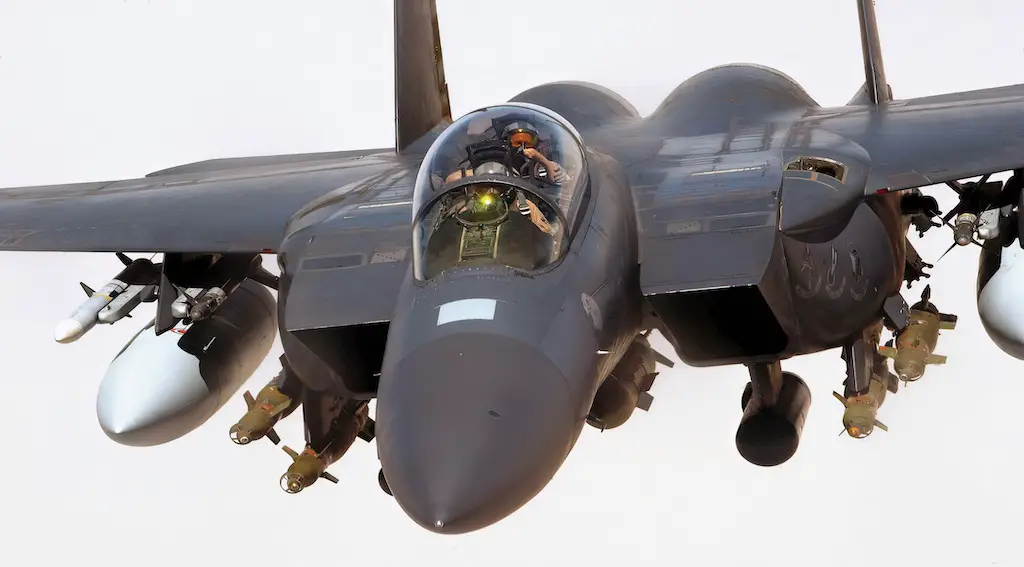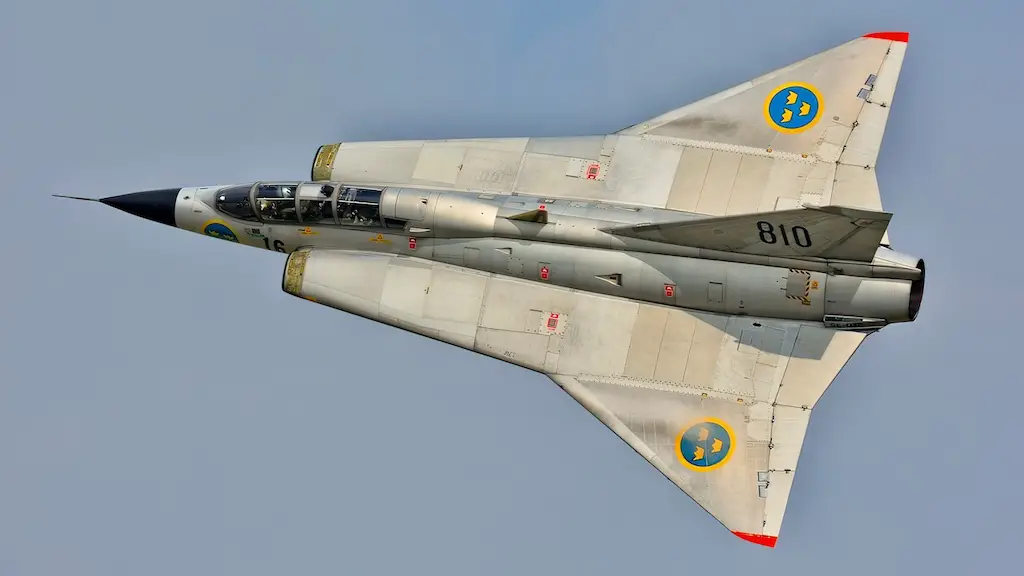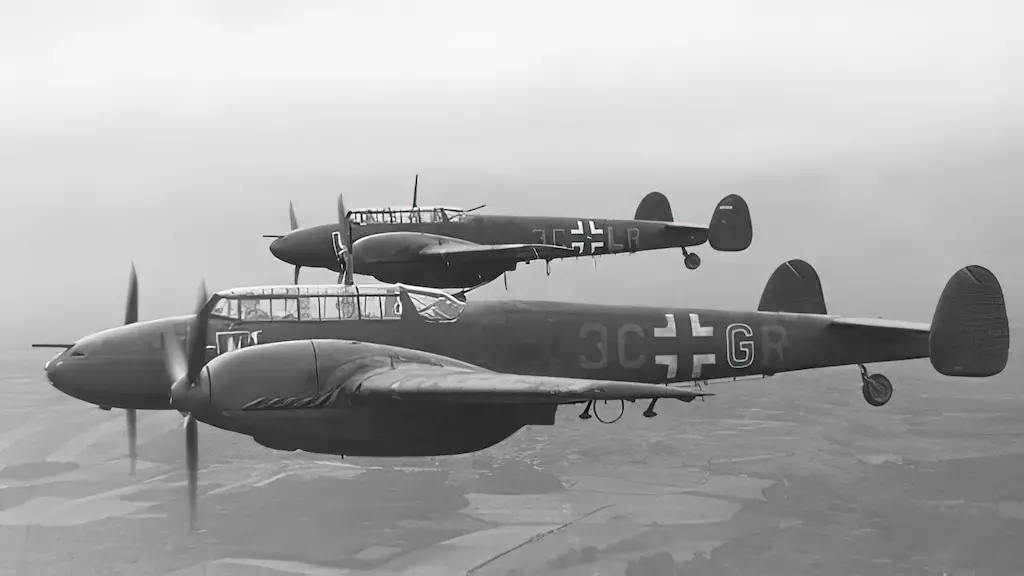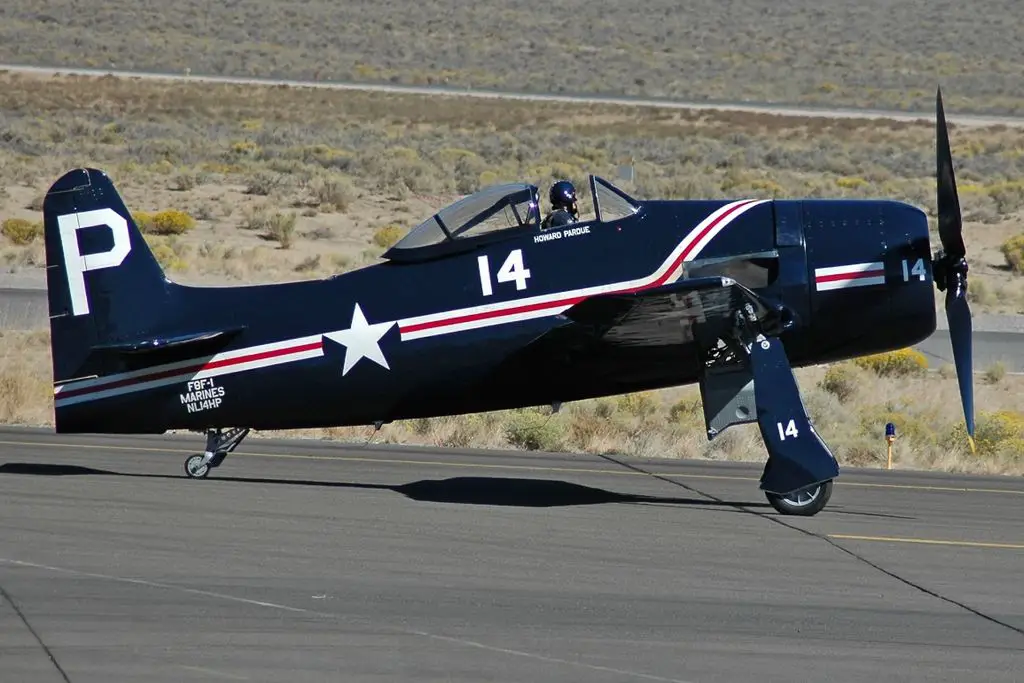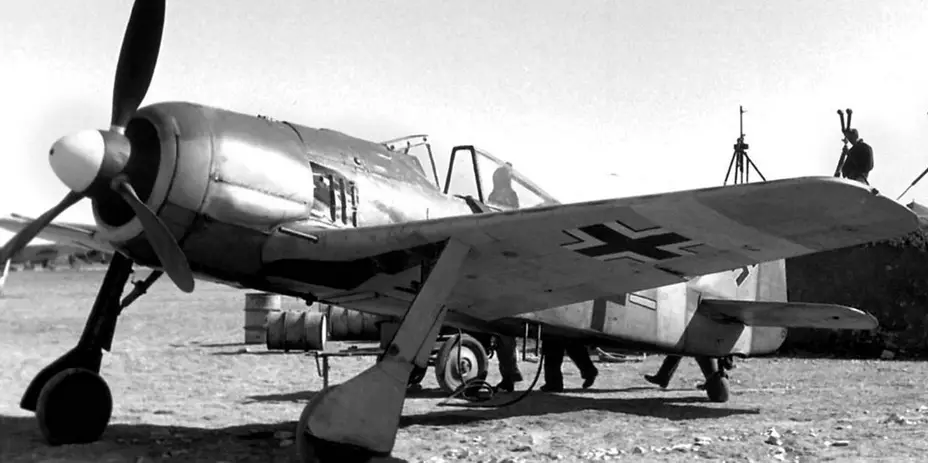Genesis of a Masterpiece
Amidst the raging storm of World War II, the pace of aircraft innovation escalated rapidly. Taking the bull by the horns in 1943, Grumman engineers embarked on an audacious venture – to conceive an aircraft that would leave every existing fighter trailing in the dust in terms of speed, ascendancy, and nimbleness.
Drawing inspiration from the exceptional flight performance of captured Focke-Wulf Fw 190, they designed the F8F Bearcat. The fighter was the epitome of piston engine technology, a technology soon to be overshadowed by the dawn of the jet age.
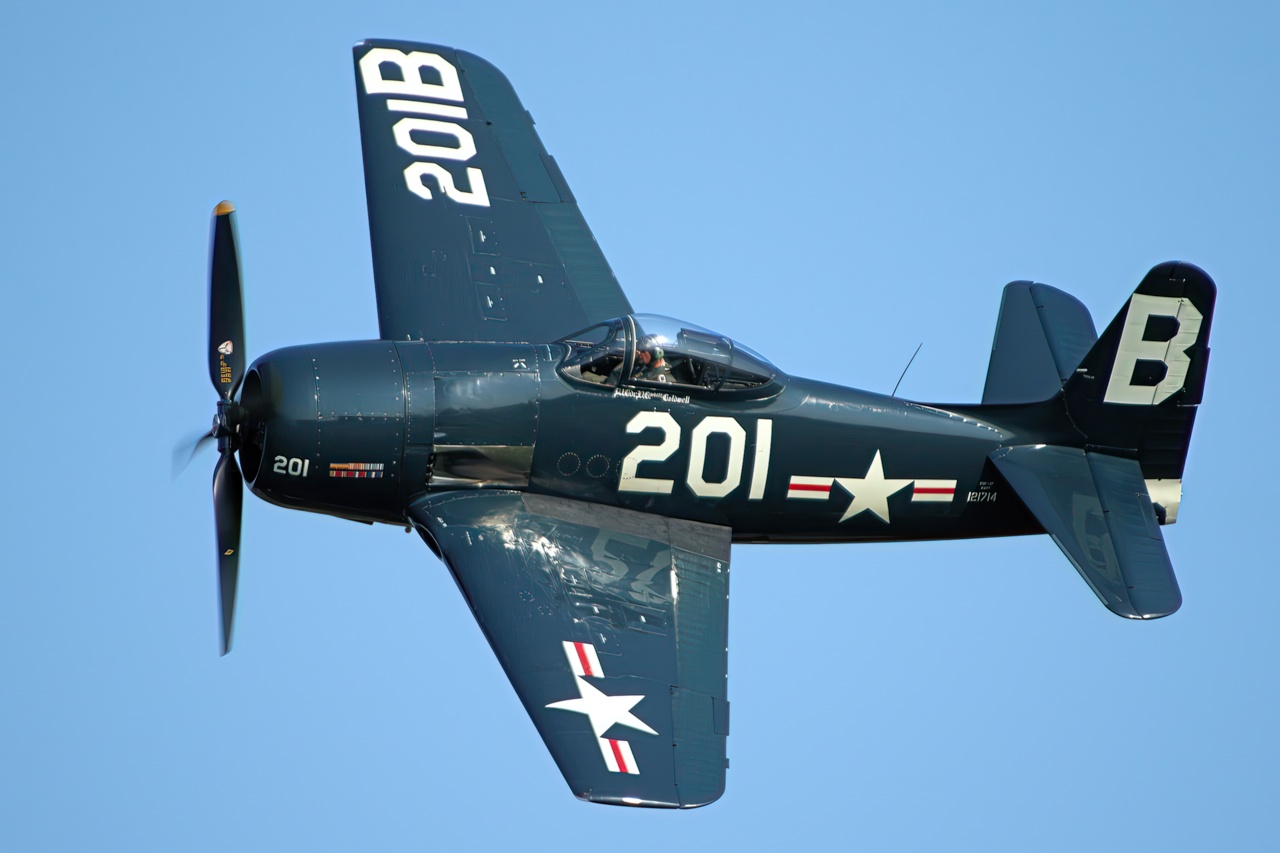
The Pratt & Whitney R-2800 Engine
The engine was the heart of the Bearcat. Under its cowl roared the Pratt & Whitney R-2800 Double Wasp, a two-row, 18-cylinder, air-cooled radial engine. Boasting a power output of 2,250 horsepower, this mechanical beast propelled the Bearcat to a top speed of 421 mph. The engine was a marvel of its time, allowing the aircraft to reach an altitude of 10,000 feet in a mere 94 seconds, an achievement unparalleled in that era.
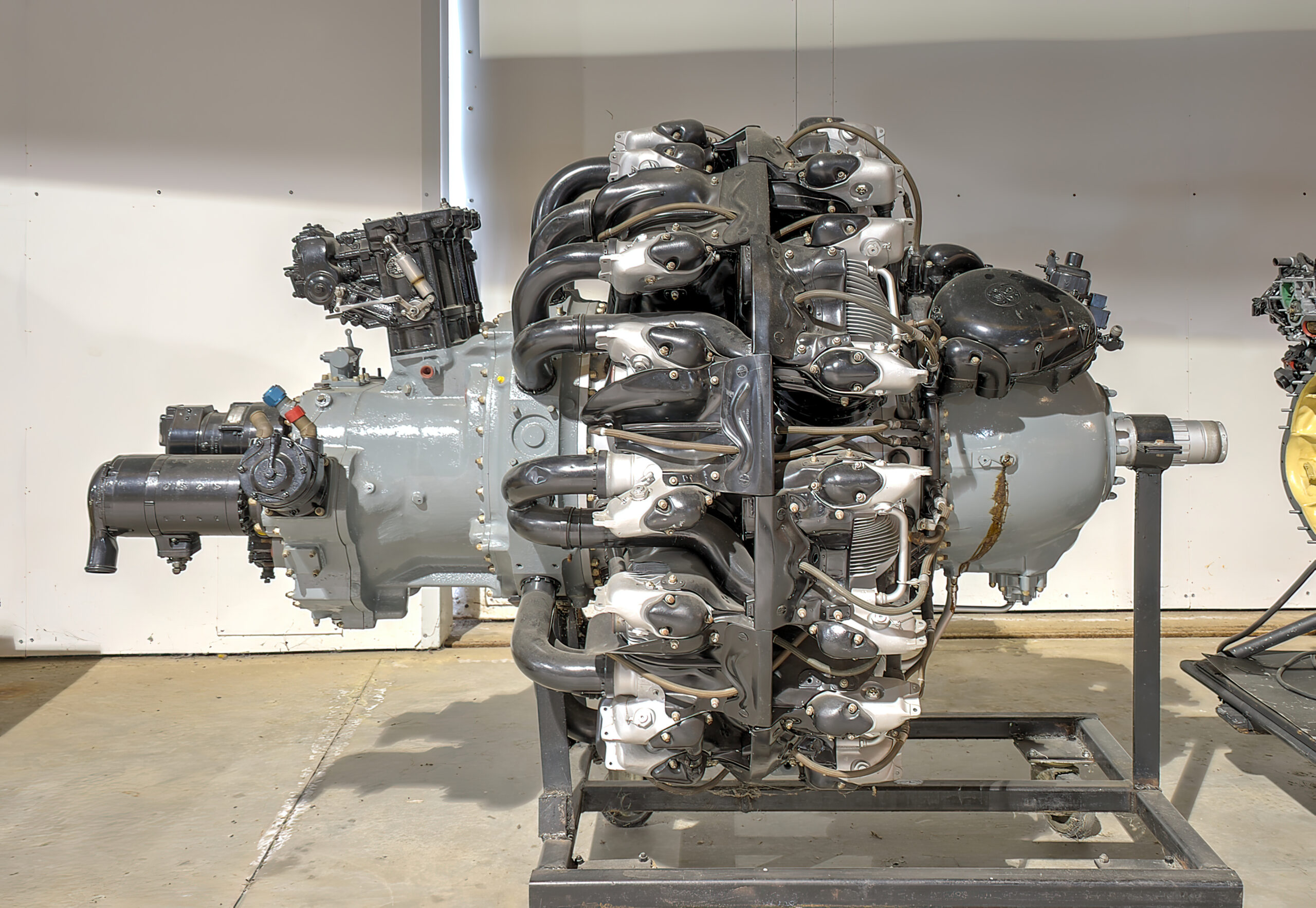
Sky-Dancing with the Bearcat
The Grumman F8F Bearcat wasn’t just a powerhouse; it was a ballerina in the sky. Its design emphasized climb rate, speed, and agility. The plane’s lightweight, coupled with its powerful engine, lent it remarkable acceleration and climb capabilities. Its small wings gave it incredible maneuverability, but at the same time, made it a challenging aircraft to fly, testing the skill of every pilot at the controls.
Operational History
Introduced in 1945, the Bearcat quickly proved its mettle in combat, showcasing remarkable speed, agility, and firepower. Despite arriving late in the war, it played a vital role in the Pacific Theater, where its unmatched rate of climb and exceptional maneuverability made it a worthy adversary against Japanese aircraft.
However, with the end of World War II, the Bearcat saw limited combat action. Nevertheless, it continued to serve as a high-performance fighter in the U.S. Navy and Marine Corps, and later in the French Navy during the First Indochina War. Its extraordinary speed records and air racing accolades further demonstrate the aircraft’s excellence. Although eventually phased out from military service, the Grumman F8F Bearcat remains an iconic and revered aircraft in aviation history, lauded for its outstanding performance and contributions to aerial warfare.
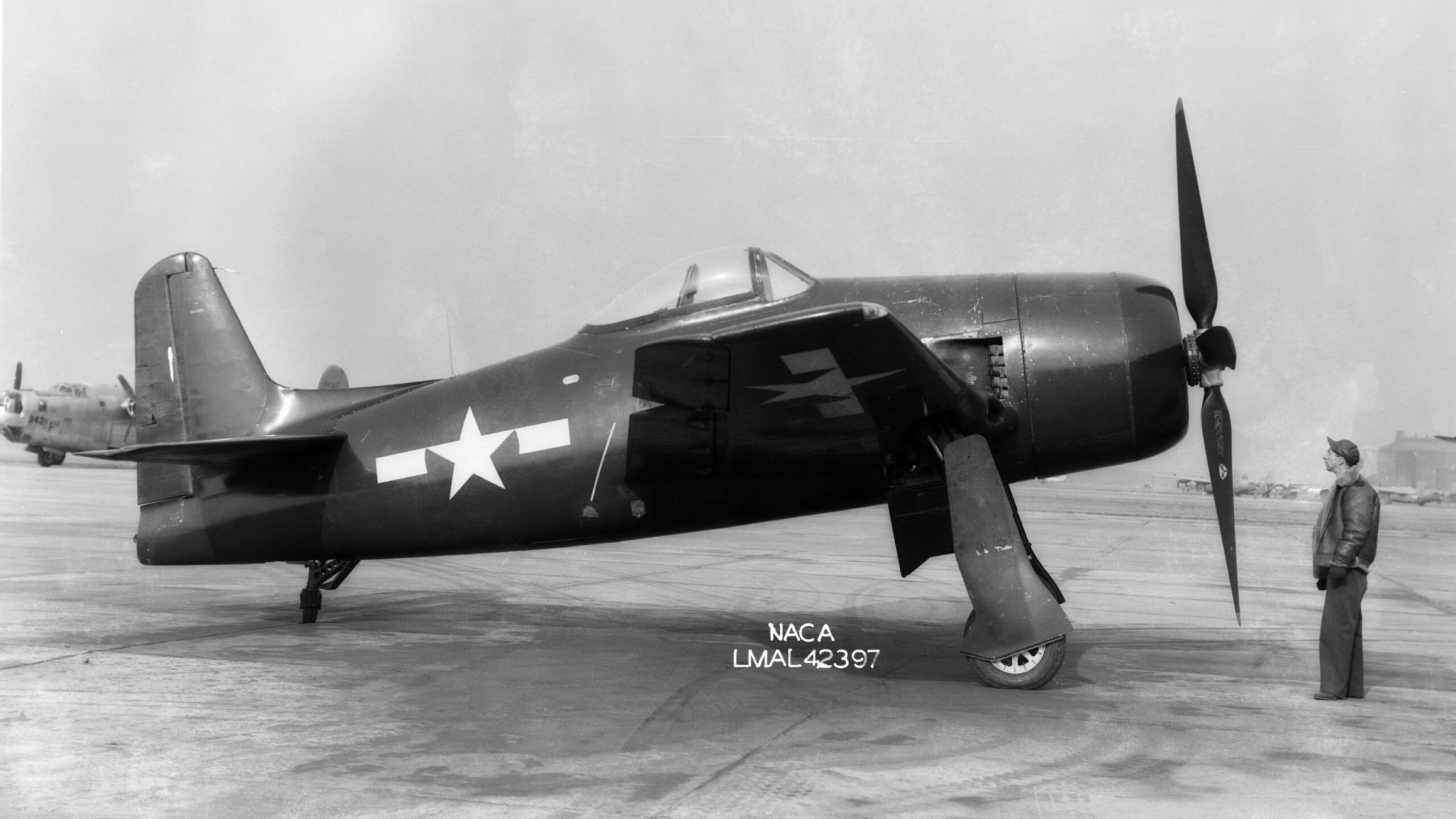
Dancing with the Blues
The Blue Angels, the U.S. Navy’s flight demonstration squadron, and the Grumman F8F Bearcat share a storied history. The squadron adopted the Bearcat in 1946, making it the fourth aircraft type to be flown by the Blue Angels since their formation in 1946.
Why the Bearcat? It had a spectacular climb rate and maneuverability, attributes that allowed the Blue Angels to execute their breathtaking aerial acrobatics. With its distinctive roar and striking blue-and-gold color scheme, the Bearcat quickly became an icon of post-war air shows. It painted the sky with precision, weaving in and out of complex formations, leaving audiences around the country in awe.
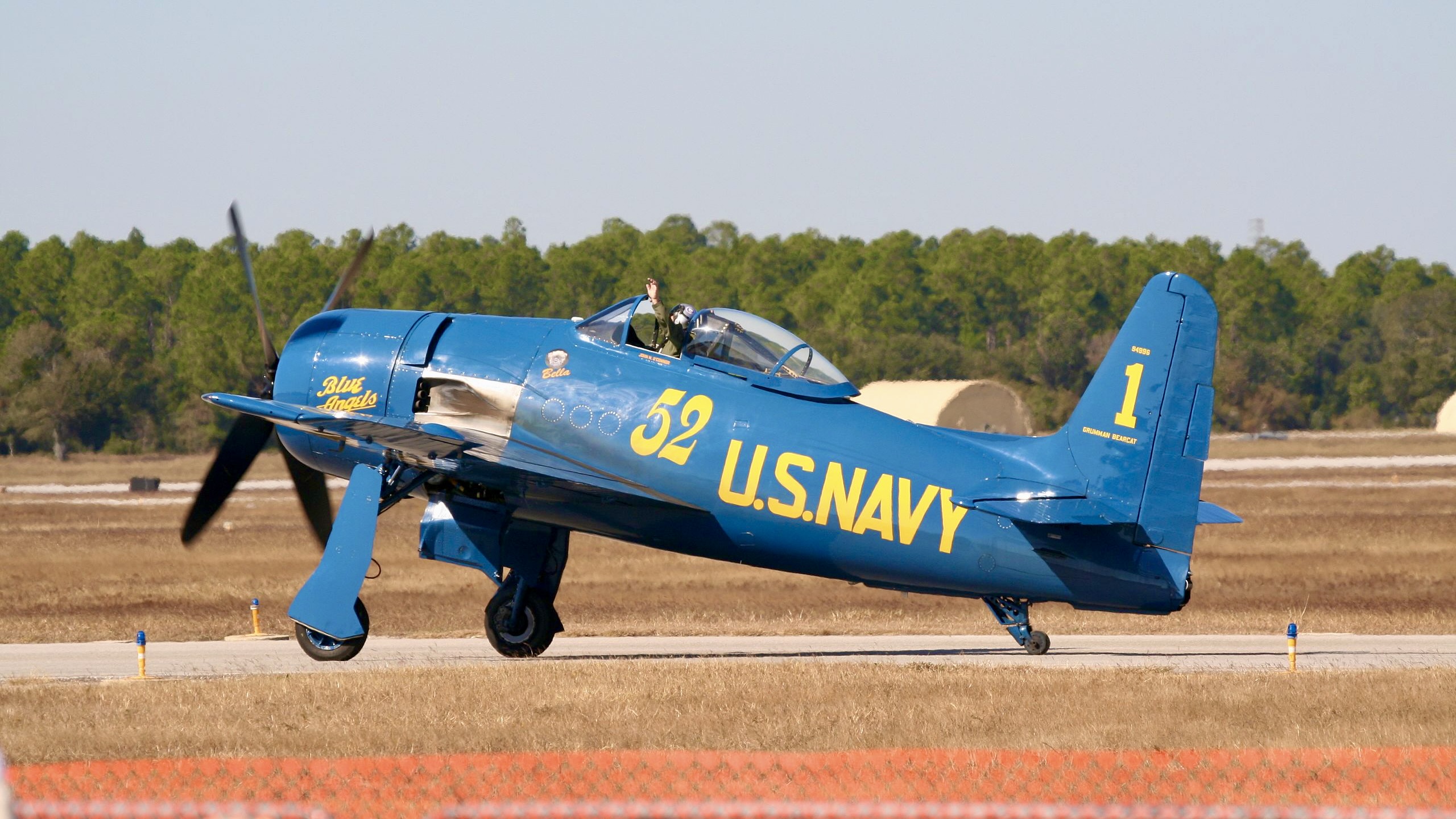
Despite the Bearcat’s late arrival to the war, the Blue Angels gave it a chance to shine on a different stage. They showcased its exceptional speed and agility, spiraling skywards in tight formations or diving down in heart-stopping feats.
The Bearcat served with the Blue Angels until 1949 when it was replaced by the jet-powered F9F Panther. But even today, the image of the Bearcat, soaring in Blue Angels colors, is a potent symbol of a time when propeller-driven aircraft ruled the skies, and a testament to the audacious feats of aviation achievable at the dawn of the jet age. The Bearcat’s legacy with the Blue Angels endures, a tribute to the enduring appeal of this extraordinary aircraft.
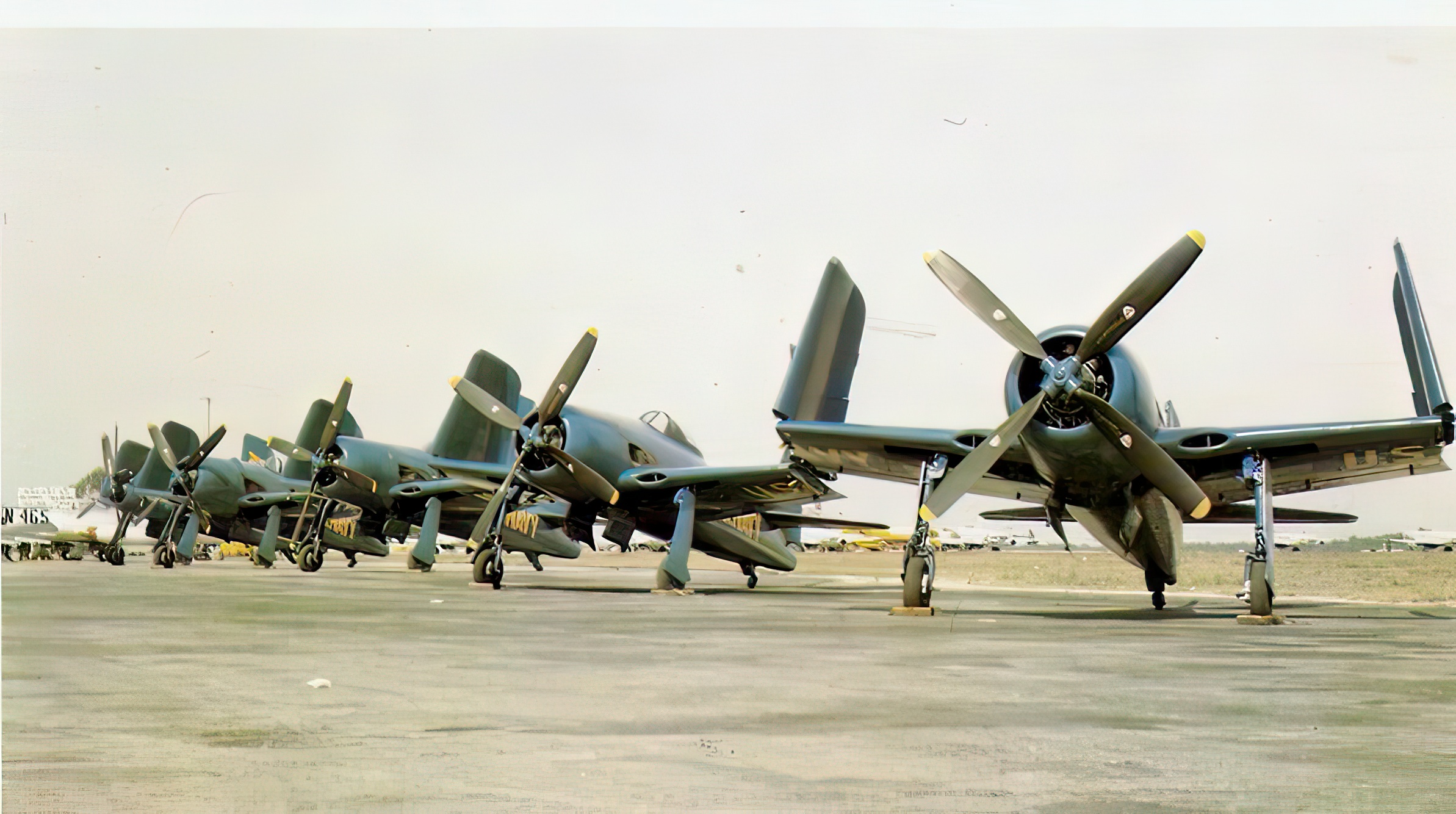
Outpaced by Time
Despite its superior performance, the Bearcat had its limitations. It arrived at a time when the jet age was dawning. Jets like the British Gloster Meteor and the American P-80 Shooting Star were already making their mark.
By the early 1950s, piston-engined fighters became obsolete, replaced by faster and more versatile jet aircraft. The Bearcat’s operational use was brief, serving in frontline squadrons for only a few years before being phased out.
However, the Bearcat’s retirement from military service didn’t signal the end. The power and agility of the F8F made it a favorite among air racers and warbird collectors. Modified versions, stripped of military equipment and souped up for speed, have won many races and set numerous records.
